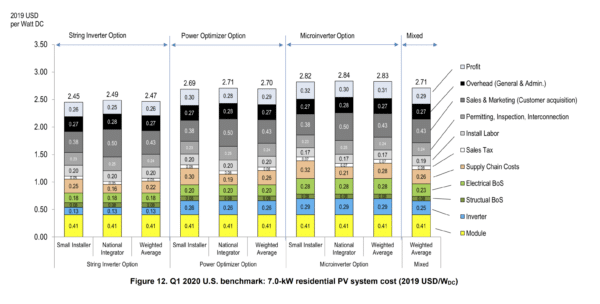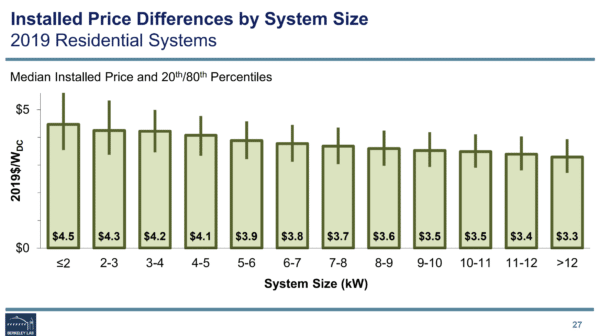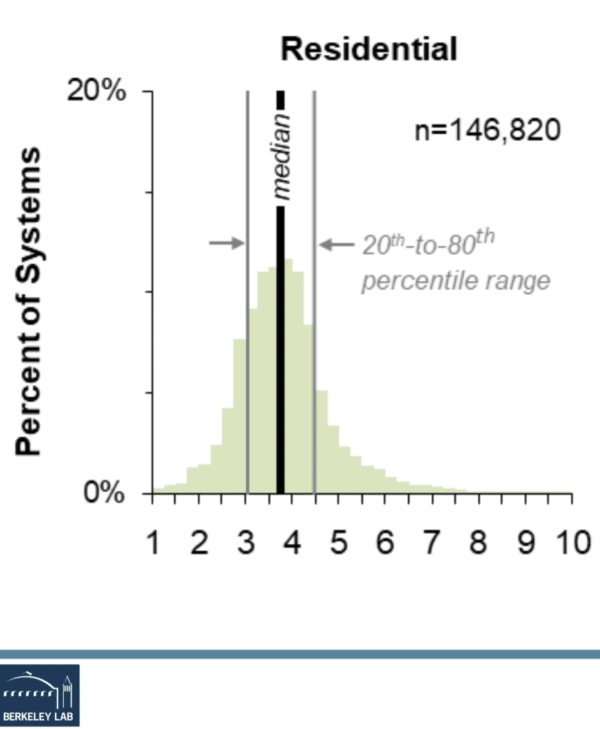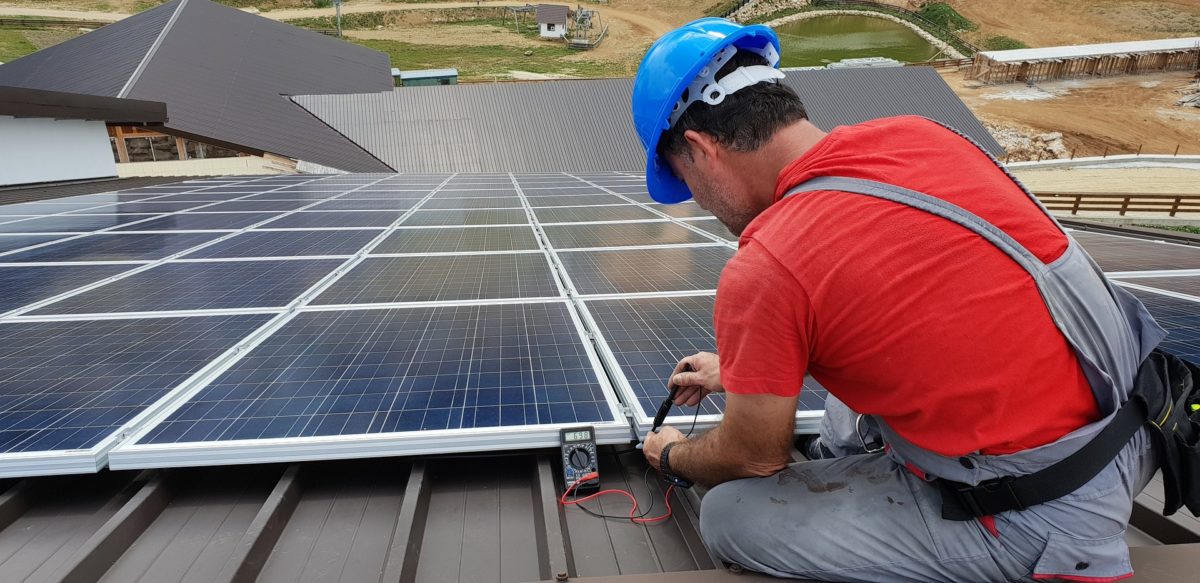Previous articles in this series examined how a roof’s age and physical characteristics, latitude, and local weather affect the design and payback of a solar system. And we discussed considerations in choosing a solar contractor. Whether you’re new to solar or simply looking to review the fundamentals, this series offers essential information and perspective to help you choose the best hardware and contractor.
Now we consider how much your prospective solar system will really cost. We’re not quite finished discussing hardware or construction, but since we just finished discussing how to find and evaluate your solar contractor, this is a good time to sojourn into pricing.
So, how much might your solar power system cost? Think of it this way: every solar system is actually a custom retrofit. The list of unique variables and components is quite long, and hardware requirements may result in a significant pricing variance.
However, we can offer you a solid guide based on averages collected from hundreds of thousands of installations across the United States. This cost data is provided via two government research lab reports.
The first report, by the U.S. Department of Energy’s (DOE’s) National Renewable Laboratory (NREL), describes the costs of a solar project from the bottom up. This means that researchers have found the cost of every component, all the engineering and applications, plus labor. And from this data they assembled this alluring chart, clearly illustrating the aforementioned prices.

As you can see, the solar module (panel) price typically represents the majority of hardware expenses. Solar panel choice is the one major item you ought to be conscious of, especially since some high-performance panels can cost twice the base price shown in this chart.
Recent increases in labor costs and many commodities around the world, including solar panels), have widened variances of component costs.
Second, this report from the Electricity Markets & Policy (EMP) team at DOE’s Lawrence Berkeley Laboratory looks at third-party data, reporting the real costs of the solar they built.

While the first report by NREL shows a base price of exactly 41¢/watt for solar panels, we can be sure that many buyers are choosing premium residential solar panels that sometimes cost twice that base price.
 Another nuance to consider is how pricing varies based upon the state you’re in. For instance, states like Massachusetts and Rhode Island have heavy electrical experience requirements for rooftop workers, pushing labor prices higher. Places like Texas and Florida, where contractor licensing laws are more lax, result in less costly installation teams.
Another nuance to consider is how pricing varies based upon the state you’re in. For instance, states like Massachusetts and Rhode Island have heavy electrical experience requirements for rooftop workers, pushing labor prices higher. Places like Texas and Florida, where contractor licensing laws are more lax, result in less costly installation teams.
Also, note that the pricing in the above chart is the median pricing, and that there are massive volumes of solar installations equally on either side of that.
One final note – plenty of research suggests that getting a few quotes is the best way to get a reasonable price. Make sure to read our prior article on finding and vetting a contractor to make sure you get those numbers.
This content is protected by copyright and may not be reused. If you want to cooperate with us and would like to reuse some of our content, please contact: editors@pv-magazine.com.








By submitting this form you agree to pv magazine using your data for the purposes of publishing your comment.
Your personal data will only be disclosed or otherwise transmitted to third parties for the purposes of spam filtering or if this is necessary for technical maintenance of the website. Any other transfer to third parties will not take place unless this is justified on the basis of applicable data protection regulations or if pv magazine is legally obliged to do so.
You may revoke this consent at any time with effect for the future, in which case your personal data will be deleted immediately. Otherwise, your data will be deleted if pv magazine has processed your request or the purpose of data storage is fulfilled.
Further information on data privacy can be found in our Data Protection Policy.